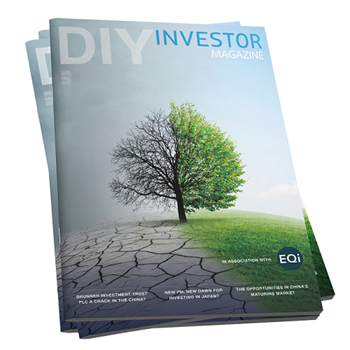A unique structure for dividend seekers

Alliance Trust is the only way ordinary UK private investors can get exposure to a select group of leading asset managers…
Disclosure – Non-Independent Marketing Communication. This is a non-independent marketing communication commissioned by Alliance Trust. The report has not been prepared in accordance with legal requirements designed to promote the independence of investment research and is not subject to any prohibition on the dealing ahead of the dissemination of investment research.
One of the frustrating things about being a retail investor is the lack of access you get to different parts of the market which are easily accessible to big institutions. Certain asset classes, derivatives and investment instruments can be difficult to get exposure to unless you have a big chunk of money to invest.
Likewise, certain fund managers do not offer their services to smaller investors but there are ways to circumvent these investing roadblocks and Alliance Trust (ATST) is one such example.
Unlike most of its peers in the space, the trust is not run by a single portfolio manager. Instead, a group of portfolio managers, chosen because they are judged to represent the best available stock picking talent, contribute to the process under the supervision of global fund selection experts Willis Towers Watson (WTW).
The top 20
It’s a system that was introduced back in 2017 when Alliance Trust appointed WTW to manage its portfolio. And although it’s not uncommon for trusts to hand their funds to different managers, WTW’s approach is slightly different.
Starting with a universe of 4,000 potential managers to choose from, the company takes 200 of the highest-rated managers and then narrows that list down to a top 20. From there the team then selects between 8 to 12 of those fund managers to make up the Alliance Trust portfolio.
But instead of every fund manager dumping a hugely diversified portfolio into the mix, the focus is on stock picking. Each manager contributes a high-conviction selection of between 10 to 20 stocks, with one current exception being GQG Partners’ emerging market fund that can select up to 60.
This group of 8 to 12 managers is not static. The WTW team keeps its top 20 group in place and can swap managers or add in more if they believe it would be the right move to make for the trust’s shareholders.
Complementary portfolios
The result is a blend of high conviction stocks in a well-diversified portfolio. The trust typically holds around 200 stocks but investors should keep in mind that these are all firms the individual fund managers believe are most likely to drive returns.
That number is also relatively low when compared to other trusts which allocate funds to different managers. For instance, one other multi-manager fund in the closed-ended space currently holds more than 400 stocks in its portfolio.
Another problem some multi-manager portfolios face is a level of overlap. In short, you may have lots of managers but they all end up picking similar stocks.
WTW aims to prevent this from happening by ensuring the fund managers it picks complement each other, as opposed to all doing the same thing. This means the portfolio contains a mix of investment styles, as well as companies of different sizes and in a range of regions.
Unique access
Part of what makes this process appealing is the fact that many of the fund managers chosen to contribute to the portfolio cannot be accessed by retail investors except through the trust.
Lyrical Asset Management is one example of this. The New York-based asset management firm invests in small and mid-cap companies and takes a value-centric approach to the market. WTW chose LAM to make up part of the ATST portfolio, in part because it usually runs small, concentrated portfolios – even when it’s not working the trust.
It’s a similar story with GQG Partners, another US asset management group. GQG contributes two portfolios to the Alliance Trust portfolio, one in emerging markets and the other in global equities. Both are managed by GQG founder Rajiv Jain and his unique stock selections can only be accessed via Alliance Trust shares.
Delivering the goods
Of course, having an interesting portfolio set up and providing investors with access to various asset managers is all well and good, but isn’t much use if you don’t deliver for shareholders. In Alliance Trust’s case that means delivering a mixture of rising dividends and capital growth.
Over the past decade it has delivered on those goals. Shareholders have seen a more than three-fold total return on their shares since 2012.
The trust has also continued to be a reliable source of dividends in that time. Indeed, Alliance Trust remains one of only four closed-ended funds on the London Stock Exchange to have paid out a rising dividend for 54 consecutive years.
There’s no guarantee the trust will be able to replicate that performance as we move into the new year, but its structure continues to enable investors to access a uniquely diversified portfolio with access to the global equities markets. Maybe being a retail investor isn’t so bad after all.
View the latest research note here >
Read the latest edition of DIY Investor Magazine
DIY Investor Magazine
The views and opinions expressed by the author, DIY Investor Magazine or associated third parties may not necessarily represent views expressed or reflected by EQi.
The content in DIY Investor Magazine is non-partisan and we receive no commissions or incentives from anything featured in the magazine.
The value of investments can fall as well as rise and any income from them is not guaranteed and you may get back less than you invested. Past performance is not a guide to future performance.
DIY Investor Magazine delivers education and information, it does not offer advice. Copyright© DIY Investor (2016) Ltd, Registered in England and Wales. No. 9978366 Registered office: Mill Barn, Mill Lane, Chiddingstone, Kent TN8 7AA.

